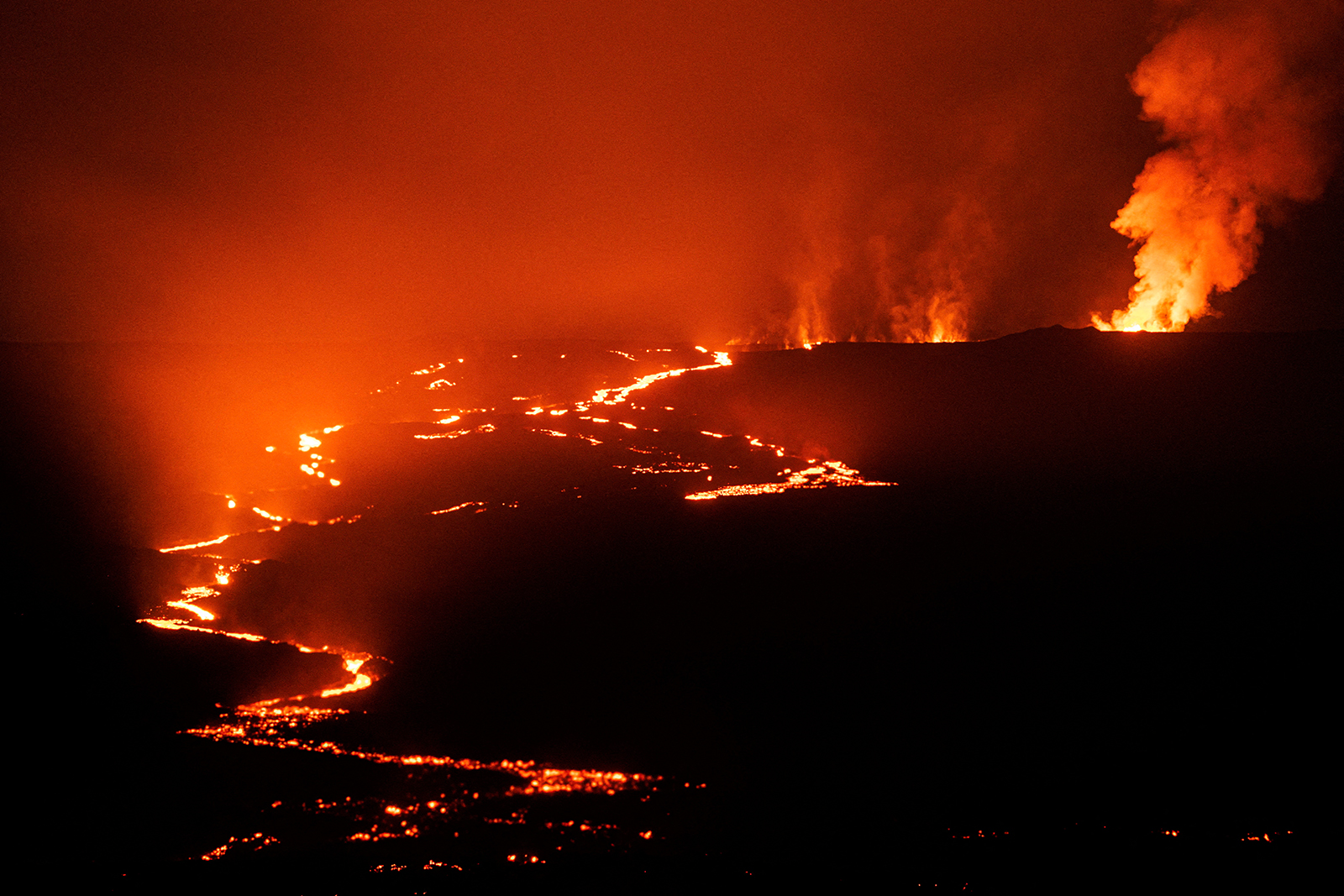Hawaii activates National Guard as Mauna Loa’s lava flow creeps toward critical highway
(CNN) — The relentless eruption of the world’s largest active volcano has prompted Hawaii’s National Guard to step in as residents and tourists flock to see it.
For 10 days, Mauna Loa has been shooting jets of lava toward the sky and down the massive mountain. While officials say there’s still no immediate risk to communities on Hawaii’s Big Island, lava has now crept within 2 miles of the main highway connecting the eastern and western halves of the Big Island.
“The leading edge of the lava flow continues to have minimal movement … and is approximately 2 miles from Daniel K. Inouye highway,” the County of Hawaii’s hazards website said Tuesday morning. “It does not pose a threat to any communities at this time.”
Mauna Loa began erupting November 27, about 21 miles from where Kilauea has been erupting since last year. As residents and tourists rush to witness and honor the rare dual eruptions, officials have enlisted the help of the National Guard.
“Gov. David Ige and Maj. General Kenneth Hara activated 20 Hawai’i National Guard service members on Monday and placed them on active duty to assist Hawai’i County with traffic control and other roles in the Mauna Loa eruption,” Hawaii’s Emergency Management Agency said Monday.
Officials also created a safe viewing spot on a one-way route accessible through the Daniel K. Inouye Highway, the Hawaii County Civil Defense Agency said.
The lava flow’s pace isn’t steady, so it’s challenging to predict exactly when lava might hit the major highway, also known as Saddle Road.
“There are many variables at play and both the direction and timing of flow advances are expected to change over periods of hours to days, making it difficult to estimate when or if the flow will impact Daniel K. Inouye Highway,” the US Geological Survey said.
The last time Mauna Loa erupted was in 1984, when its lava reached about 4.5 miles from Hilo, the largest population center on the Big Island.
If or when lava from the current eruption reaches the critical highway largely depends on how long Mauna Loa erupts, a volcano expert said.
“We don’t know how long this eruption is going to last, and that will dictate whether or not the highway becomes more threatened,” said Natalia Deligne, a volcanologist with the US Geological Survey at the Hawaiian Volcano Observatory.
Mauna Loa and Kilauea are in Hawaii Volcanoes National Park, which remains open as it urges spectators to view the dual eruptions safely.
“Stepping into week two of the Mauna Loa eruption,” the park posted Monday on Facebook. “Two volcanoes, two eruptions, one park. It was another ‘glowrious’ morning today!”
Honoring the volcanoes’ spiritual power
While some see the Big Island’s eruptions as a threat, for many Native Hawaiians, the eruptions have incredible spiritual significance.
Ku’ulei Vickery, a Native Hawaiian and a teacher at a nearby public school, was among those who witnessed the glowing orange molten rock flow Friday. She performed a traditional Hawaiian chant and left rosemary grown in her backyard as an offering.
“As a native, I’m acknowledging the space that I am in. I’m acknowledging the goddess Pele, and the people who have come before me, my ancestors,” she said. “You don’t go to anyone’s house empty-handed. So this is what I brought.”
Officials urged anyone who wants to watch the dual eruptions to be aware of the possible health hazards in the air.
Volcanic emissions include sulfur dioxide, which reacts with other elements in the atmosphere and can begin to form fine particles which cause vog, a type of volcanic air pollution known as volcanic smog.
“Vog creates the potential for airborne health hazards to residents and visitors, damages agricultural crops and other plants, and affects livestock operations,” the USGS said.
The National Park Service says vulnerable groups, typically including the elderly and children, to be careful when viewing the dual eruptions.
“People with pre-existing respiratory conditions are especially sensitive to poor air quality and should check the air quality alert before visiting,” the park service said.
